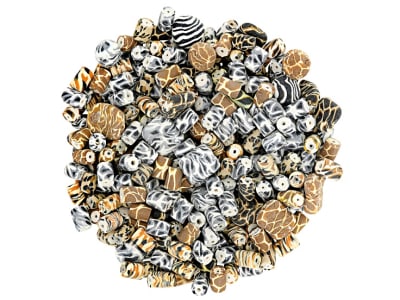Polymer clay is made from PVC resin and a liquid plasticizer. It is pliable until baked in an oven. Jewelers use polymer clay to create colorful beads, pendants, earrings, and bracelets in fanciful designs. Since the material can be molded into any shape, cut with simple tools, and embellished with paint, the only limit to its use is the artist’s imagination.
General Information
Polymer Clay Colors
-
 Bi-color
Bi-color -
 Black
Black -
 Blue
Blue -
 Brown
Brown -
 Colorless
Colorless -
 Gray
Gray -
 Green
Green -
 Multi-color
Multi-color -
 Orange
Orange -
 Pink
Pink -
 Purple
Purple -
 Red
Red -
 White
White -
 Yellow
Yellow
Countries of Origin
Unknown; China
History
Bakelite, an early plastic, was popular with designers and was an early form of polymer clay, but the phenol base of uncured Bakelite was flammable and was eventually discontinued.
Care
Polymer clay is soft, so be mindful of scratching. Avoid chemicals, and ultrasonic cleaners. In addition to above precautions: avoid perfumes, and hairsprays. Requires gentle handling.
